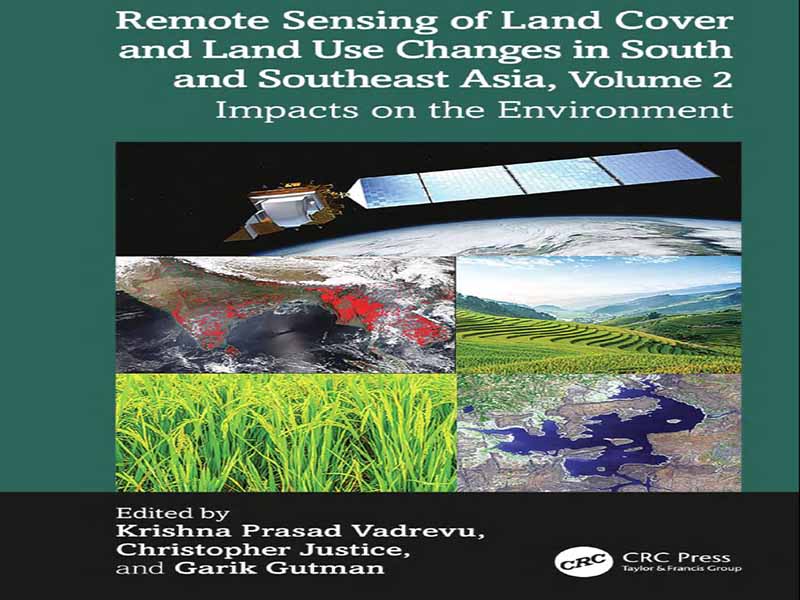- عنوان کتاب: Non-Petroleum Automotive Transportation
- نویسنده: Carl Arthur MacCarley
- حوزه: شیمی مواد
- سال انتشار: 2025
- تعداد صفحه: 687
- زبان اصلی: انگلیسی
- نوع فایل: pdf
- حجم فایل: 16.8 مگابایت
حمل و نقل خودرو برای سبک زندگی ما حیاتی است. این صنعت از طریق فناوریها و منابع انرژی متعددی تکامل یافته است. داستان احتمالاً از عصر طلایی خودروهای الکتریکی بین سالهای ۱۸۹۰ تا ۱۹۱۰ آغاز میشود، زمانی که هنوز قدرت اسب حکمفرما بود و تعداد خودروهای الکتریکی در جادههای ایالات متحده و اروپا بیشتر از خودروهای احتراق داخلی از هر نوع – موتورهای احتراق داخلی (ICE) یا موتورهای بخار (موتورهای احتراق پیوسته یا CCE) – بود. خودروهای باتری-الکتریکی که تقریباً به طور کامل در مناطق شهری از جمله نیویورک، بالتیمور، پاریس، اشتوتگارت و لندن مستقر بودند، مورد توجه مالکان ثروتمند و رانندگان تاکسی بودند: بیصدا، کمبو و آسان برای کار و بدون نیاز به روشن کردن با هندل دستی. انرژی الکتریکی تقریباً به طور انحصاری از نیروگاههای زغالسنگ سوز تأمین میشد که برخی از آنها صرفاً برای شارژ خودروهای الکتریکی اختصاص داده شده بودند. ذخیرهسازی انرژی تقریباً به طور انحصاری از طریق باتریهای سرب-اسید (به استثنای سلولهای نیکل-آهن ادیسون) انجام میشد، همانطور که تا ۱۱۰ سال آینده نیز ادامه یافت. فناوریهای رقیب خودرو از سوختهای هیدروکربنی مایع مختلفی استفاده میکردند که معمولاً از داروخانههای محلی یا فروشگاههای عمومی خریداری میشدند. این شامل مشتقات نفتی با حداقل تصفیه، روغنهای گیاهی، روغن نهنگ، بنزین (همانطور که بنزین هنوز در بیشتر اروپا نامیده میشود)، تولوئن، استون، متانول (الکل چوب) و اتانول (الکل غلات) بود. بنزین استاندارد، همانطور که ما میشناسیم، تا 20 سال دیگر رایج نشد. اما با چگالی انرژی فوقالعاده بالا و هزینه پایین سوختهای نفتی، معرفی فورد مدل T کمهزینه در سال 1908 [1]، و نوآوریهای فنی بعدی مانند احتراق کترینگ و استارت الکتریکی، وسایل نقلیه ICE تقریباً تا سال 1920 به طور کامل از وسایل نقلیه باتری-الکتریکی پیشی گرفتند. تولیدکنندگان خودروهای الکتریکی کوتاهمدت جای خود را به تولیدکنندگان نوپای وسایل نقلیه ICE دادند. جادههای آسفالت جایگزین خیابانها و مسیرهای خاکی شدند و بزرگراهها و اتوبانهای بین قارهای ساخته شدند، همه اینها برای فراهم کردن امتیاز بیسابقه حمل و نقل شخصی پرسرعت با استفاده از بنزین یا سوخت دیزل. خودروهای الکتریکی به کاربردهای ویژهای مانند وسایل نقلیه معدنی سرپوشیده یا زیرزمینی منتقل شدند، اگرچه قطارهای برقی همچنان محبوبیت خود را افزایش دادند، همانطور که امروزه نیز همچنان پابرجاست زیرا نیازی به ذخیره انرژی در داخل وسیله نقلیه ندارند. در مورد آلودگی … تمام نوآوریهای وسایل نقلیه بدون اسب، چه برقی و چه ICE، به عنوان پیشرفتهای عمده در مقایسه با انتشار گازهای گلخانهای ناشی از اسبها که مسئول مشکلات جدی بهداشت شهری بودند، مورد توجه قرار گرفتند. زغال سنگ پادشاه بود، توسط لوکوموتیوها و کشتیها و برای گرمایش خانگی، تولید برق و تولید گاز شهری برای روشنایی و پخت و پز سوزانده میشد. ارتباط بین آلودگی هوا و سلامت به زودی شناخته شد، اما به عنوان هزینه پیشرفت پذیرفته شد. این امضای انقلاب صنعتی در انگلستان و اروپای غربی و بعداً در ایالات متحده آمریکا بود. در طول ۱۰۰ سال بعدی، دورههای علاقه به جایگزینهایی برای بنزین و سوخت دیزل مکرر بود، که معمولاً به دنبال آن، افکار عمومی در مورد آلودگی هوای خودروها یا «کمبود گاز» به دلیل سیاستهای جهانی نفت، پدیدار میشد. تا دهه ۱۹۷۰، فرض بر این بود که ذخایر نفت جهان نامحدود است، فرضی که در سال ۱۹۵۶ پس از انتشار «منحنی هابرت» ادوین هابرت، مهندس شرکت استاندارد اویل، برای اوج نفت، به چالش کشیده شد. این فرضیه پیشبینی میکرد که بحران ژئوپلیتیکی نه زمانی که ذخایر تمام شوند، بلکه زمانی که استخراج نفت نتواند با تقاضا همگام شود، رخ خواهد داد. کمبودهای ناشی از جنگهای جهانی اول و دوم، درگیری کانال سوئز در سال ۱۹۵۶ و جنگ شش روزه اسرائیل و مصر در سال ۱۹۶۷، اهمیت جریان آزاد نفت را برای اروپای غربی آشکار کرد، اما به دلیل ذخایر عظیم نفت بومی، تأثیر کمی بر آمریکای شمالی داشت. پس از کمبود نفت در سالهای ۱۹۷۳ و ۱۹۷۹، نگرشها در ایالات متحده به دلیل وابستگی فزاینده به نفت ارزان وارداتی از خلیج فارس که توسط کارتل سازمان کشورهای صادرکننده نفت (اوپک) کنترل میشد، به طرز چشمگیری تغییر کرد. این افسانه که هر پمپ بنزین محلی همیشه سوخت (ارزان) برای ماشین شما خواهد داشت، برای این دورههای کوتاه در هم شکست، اگرچه تا دهه ۱۹۸۰ به سرعت فراموش شد. از اواسط دهه ۱۹۷۰ در سراسر جهان، به عنوان مثال، که با انتشار کتاب «محدودیتهای رشد» [2] در سال ۱۹۷۲ نمونهای از آن ارائه شد، اعتیاد به نفت با منبع زمینی به عنوان محرک اصلی نه تنها اقتصاد و سیاست جهان، بلکه همچنین تغییرات اقلیمی فزاینده وخیم شناخته شد. تا سال ۲۰۱۰، روزانه بیش از یک میلیارد [3] وسیله نقلیه با سوخت نفتی در سراسر جهان در حال فعالیت بودند. نفت و تأثیرات آن بر انرژی و پایداری زیستمحیطی، اکنون موضوع تیترهای روزانه رسانهها بود. انفجار اطلاعات (نادرست) با درجات مختلفی از اعتبار در دهه ۱۹۹۰ از طریق اینترنت فراگیر آغاز شد، رسانهای که به هر کسی صدا میدهد و فاقد فرآیند بررسی انتشار رسمی است که قبلاً از زمان گوتنبرگ تا حدودی اعتبار را تضمین میکرد. در زمان نگارش این مطلب (۲۰۲۴)، ما گزینههای انرژی محرک بیشتری نسبت به هر زمان دیگری در تاریخ داریم. علاوه بر نیروی محرکه الکتریکی، طیف گستردهای از…
Automotive transportation is vital to our way of life. It has evolved through multiple technologies and energy sources. The story probably begins in the Golden Age of Electric Vehicles between 1890 and 1910, when horse power still ruled, and there were more electric vehicles operating on US and European roads than combustion engine vehicles of any type—internal combustion engines (ICEs) or steam engines (continuous combustion engines or CCEs). Deployed almost entirely in urban areas including New York, Baltimore, Paris, Stuttgart, and London, battery-electric vehicles were the fascination of affluent owners and taxi operators: quiet, less odiferous, and easy to operate requiring no hand crank starting. Electric power was sourced almost exclusively from coal-burning power plants, some dedicated solely for charging electric vehicles. Energy storage was almost exclusively via lead-acid batteries (with the exception of Edison nickel-iron cells), as they would continue to be for the next 110 years. Competing vehicle technologies used many different liquid hydrocarbon fuels, usually purchased at local drug or general stores. These included minimally refined petroleum derivatives, vegetable oils, whale oil, benzine (as gasoline is still called in much of Europe), toluene, acetone, methanol (wood alcohol), and ethanol (grain alcohol). Standardized gasoline, as we know it, would not become common for another 20 years. But with the incredibly high energy density and low cost of petroleum fuels, introduction of the low-cost Ford Model T in 1908 [1], and subsequent technical innovations such as the Kettering ignition and electric starter, ICE vehicles eclipsed battery-electric vehicles almost completely by 1920. Short- lived electric car manufacturers were replaced by start-up ICE vehicle manufacturers. Paved roads replaced dirt streets and paths, and transcontinental highways and autobahns were built, all to enable the unprecedented privilege of high-speed personal transportation using gasoline or diesel fuel. Electric cars were relegated to special applications, such as indoor-operated or underground mining vehicles, although electric rail continued to grow in popularity, as it remains today since it does not require energy storage onboard the vehicle. Regarding pollution … All horseless vehicular innovations, electric or ICE, were touted as major improvements over the emissions of horses that were responsible for serious urban sanitation problems. Coal was king, burned by locomotives and ships and for domestic heating, electricity generation, and town gas production for lighting and cooking. The connection between air pollution and health was soon recognized but was accepted as a cost of progress. This was the signature of the industrial revolution in England and Western Europe and later in the USA. Over the next 100 years, periods of interest in alternatives to gasoline and diesel fuel were frequent, usually followed by public epiphanies about automotive air pollution or “gas shortages” due to the global politics of oil. Until the 1970s, world oil reserves were assumed to be limitless, an assumption that was challenged in 1956 following the publication of Standard Oil Co. engineer Edwin Hubbert’s “Hubbert Curve” for peak oil, which predicted that a geopolitical crisis would occur not when reserves were depleted, but when oil extraction could not keep pace with demand. Shortages of World Wars I and II, the Suez Canal conflict of 1956, and the Israel- Egypt Six-Day War in 1967 brought home the importance of free-flowing oil to Western Europe, but had little effect on North America due to its large indigenous oil reserves. Following the oil shortages of 1973 and 1979, attitudes in the USA changed dramatically due to growing dependence on inexpensive oil imported from the Persian Gulf controlled by the Organization of the Petroleum Exporting Countries (OPEC) cartel. The myth that every local gas station would always have (inexpensive) fuel for your car was shattered for these brief periods, although, by the 1980s, quickly forgotten. Starting in the mid-1970s worldwide, e.g., exemplified by the 1972 publication of “Limits of Growth” [2], the addiction to earth-sourced petroleum was recognized as a primary driver of not only world economics and politics, but also increasingly dire climate changes. By 2010, over one billion [3] petroleum-powered vehicles were operating daily worldwide. Petroleum and its energy and environmental sustainability impacts were now the topic of daily media headlines. An explosion of (mis)information with various degrees of credibility began in the 1990s via the ubiquitous Internet, a medium that gives voice to anyone, lacking the vetting process of formal publication that had previously assured some degree of credibility since the time of Gutenberg. At the time of writing (2024), we have more motive energy options available than ever before in history. In addition to electric propulsion, a wide range of alternative combustion fuels, most notably alcohols, vegetable oils, and gaseous fuels, have been considered and supported at times by government and private funding. Unfortunately, also appearing were “amazing” engine accessories whose claims often violate the laws of thermodynamics. Greenwashing remains a powerful marketing tool with a gullible public and politicians. Within this noise were a few pracical “transition fuels” and related technologies that could potentially bridge the existing fuel distribution infrastructure with a tolerable degree of modification. A renaissance of electric propulsion began in the late 1990s with popular majormanufacturer vehicles such as the GM EV-1 introduced in 1996 (lead-acid and nickel metal hydride or NiMh batteries), the Honda Insight Hybrid (NiCad and NiMh batteries) in 1998, and the Toyota Prius Hybrid in 2001 (NiMh batteries). But the technical development that enabled this revolution was lithium-based batteries having energy storage densities 3–5 times greater than previous lead-acid, NiCad, or NiMh batteries. After decades of battery research, this was the turning point. The EV revolution then gained momentum from attractive high-power electric vehicles: the AC Propulsion T-Zero circa 1999, the 2008 Tesla Roadster, and, most significantly, the 2012 Nissan Leaf. As of 2023, over a 100 EV and plug-hybrid models have been subsequently introduced by major and start-up manufacturers worldwide, and the number is growing. The apparent consensus of car manufacturers and government entities worldwide is that the future is electric vehicles with energy stored in lithium batteries or hydrogen for fuel cells. Almost all major world manufacturers had pledged to sunset all ICE automobile production in favor of battery-electrics, mostly by 2030. To support these vehicles, large investments are done in subsidized public and captive (e.g., Tesla-only) charging infrastructure. Despite their significantly higher purchase costs and lingering concerns about range and charging time, the advantages of electric cars and trucks were well established, appealing to a public that wants to help alleviate climate change or improve energy independence, as long as it is not too inconvenient. The rush to electric automobiles has largely ignored the impacts of this transition on electric power generation, distribution, and storage. The immediate retort to such concerns is “solar and wind energy,” despite the well-known misalignment between time of production and time of demand. Proposed energy storage solutions have been plagued by a lack of practical data and sheer magnitude of the problem—the huge amount of energy that must be stored and released daily either locally or in the grid to accommodate intermittent solar and wind generators. With the lowest number of operating nuclear power plants in the USA since the 1960s, and 10+ year approval/design/build time for new nuclear facilities, even that unpopular but carbon-free generation option is off the table until well after the transition to electric transportation energy has played out. Meanwhile, the broad hopes assigned to vehicle electrification have almost completely narrowed commercial and government interest to battery-electric or fuel-cell electric vehicles, displacing renewable fuel alternatives, some that have comparatively lower overall carbon footprints than EVs charged from the current US and world mix of energy sources for grid electricity. Objective direct comparisons of the full range of motive energy options have been rare in both scientific literature and popular media. It is my objective here to examine in one place a full range of options for ground transportation, and present the technologies, advantages, and limitations of each. These include battery and fuel-cell electric vehicles, alternative combustion fuels, and the status quo—gasoline and diesel fuels. Energy and environmental issues have become one of the largest areas of public debate, driven by desperation to address environmental and energy sustainability challenges in an information ecology ranging from voluminous academic and government research papers to rants on public Internet forums. This is a sociotechnical area with countless experts and public voices, often reaching different conclusions. Technical and policy changes occur almost daily. It is not as simple as science vs. opinion. Differing answers to the same technical questions rely heavily on the assumptions and data sources. In the material herein, I will do my best to state my assumptions and sources so that my results can be checked by others. I will attempt to identify greenwashing1 regardless of the source or objective, since this phenomenon has become so widespread as to sabotage solutions that are actually scientifically sound, practical, and not encumbered by profit motives or career/political ambitions.
این کتاب را میتوانید از لینک زیر بصورت رایگان دانلود کنید:
Download: Non-Petroleum Automotive Transportation



































نظرات کاربران